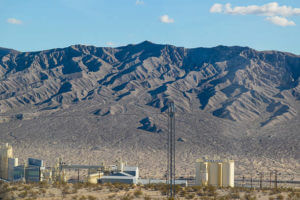
The Nevada Test Site is a historical and controversial topic, with its notoriety stemming from both nuclear tests and its aftermath on the people and the environment. Let’s learn more about the history of the Nevada test site, the environmental and human impact of those tests, and how people are still affected today.
The Nevada Test Site: A Brief History
The Nevada Test Site is a 1,350-square-mile area located about 60 miles northwest of Las Vegas that was first used for atomic testing in the 1950s. Over the next four decades, the Nevada test site hosted over 900 nuclear tests – more than any other location in the United States. Of these nuclear tests, 100 atomic bombs were detonated above ground from airplanes, towers, cannons, and balloons, with more than 800 nuclear tests conducted underground. This included a 1.3-megaton blast with the equivalent yield of 65 Hiroshima bombs.
These nuclear tests were conducted to better understand and develop nuclear weapons during the Cold War. The Nevada Test Site played a major role in shaping national and international policies regarding nuclear testing and nonproliferation.
Environmental Impact of Nuclear Testing
Unfortunately, the impact of nuclear tests on the environment was, and still is, significant. Radiation from the explosions was a major source of pollution, causing widespread damage to the atmosphere, soil, water, and ecosystems in the area. The underground tests performed at the Nevada Test Site, of which some were as deep as 5,000 feet, vaporized large chambers, creating cavities filled with radioactive debris, and mushroom clouds created by the atmospheric tests spread radioactive debris and particles far and wide and could be seen from as far as 100 miles away.
Airborne Contamination
Radioactive particles released into the atmosphere from the tests were carried by the wind, resulting in fallout both near and far from the site. Areas across the United States and even other parts of the world experienced fallout, leading to significant problems, including an increased cancer risk for those exposed.
Soil Contamination
Fallout particles contaminated the soil in the vicinity of the test site, making it difficult for plants and animals to thrive. This has led to a loss of biodiversity and habitat degradation in the area.
Groundwater Contamination
The underground tests performed at the Nevada Test Site also resulted in radioactive contaminants entering the groundwater supply, which is still a problem today, posing a risk to human health and wildlife in the region that depends on water sources for survival. Radioactivity levels in the water are declining over time, but elements such as plutonium or uranium are likely to pose a risk for thousands of years.
The Human Impact of the Nevada Test Site
The environmental impact of the nuclear tests at the Nevada Test Site is intertwined with the human impact. Communities living downwind of the test site, known as “Downwinders,” have experienced severe health effects from radiation exposure, including cancer, leukemia, and other diseases.
In addition to the Downwinders, the nuclear tests have profoundly impacted military personnel and their families stationed at the test site. Military members often witnessed tests without sufficient protection, being exposed to high radiation levels.
Compensation Programs for Workers and Downwinders
In 1990, a number of compensation programs (approved by the United States Congress) were set up for those affected by government nuclear testing to provide compensation and/or medical benefits to eligible DOE (Department of Energy) nuclear weapons workers and other certain eligible survivors, such as downwinders. These include:
- The Energy Employees Occupational Illness Compensation Program Act (EEOICPA) –provides compensation along with medical benefits to civilian men and women (and eligible survivors) for illnesses incurred as a result of exposure to radiation or other toxic substances during their employment at the Department of Energy (DOE), its contractor, or subcontractor facilities. (Workers from certain Atomic Weapons Employers are also covered under EEOICPA.)
- The Radiation Exposure Compensation Act (RECA) -provides payments to individuals who contracted certain types of cancer or other diseases as a result of exposure to radiation. This includes Downwinders of the Nevada Test Site, onsite workers participating in aboveground nuclear weapons tests, and uranium miners, millers, and ore transporters.
The Nevada Test Site played a significant role in shaping the United States’ nuclear history. However, its legacy also includes shocking environmental and human consequences.
The National Cancer Benefits Center: Helping Victims of the Nevada Test Site
If you or a loved one has been affected by the nuclear tests that occurred at the Nevada Test Site or were involved in any nuclear weapons production and testing programs of the Department of Energy (DOE) and its predecessor agencies, you could be entitled to compensation.
The Cancer Benefits Center was set up to help those affected by illnesses resulting from exposure to radiation or other toxic substances due to nuclear testing at sites such as the Nevada Test Site. They promote and work with many different benefit programs.
Their commitment is to provide unbiased, personalized advice and prudent strategies to enable individuals to obtain the largest financial award if affected by health-related issues due to DOE nuclear weapons production and testing programs. Their services are tailored to each individual’s unique needs and may include investigative research and document preparation during the claims process to help individuals obtain their benefits as quickly and as effortlessly as possible.
Downwinder Claims in Arizona, Florida, and Montana
If you or a family member have been diagnosed with a covered cancer or leukemia within the last 65 years and have lived in a covered area, call the friendly staff at the Cancer Benefits Center for Downwinders® today to find out if you are eligible for compensation. For free information, call us anytime Toll Free at 1 (855) 631-7197, 24 hours a day, 7 days a week.
 Downwinders® Claims
Downwinders® Claims